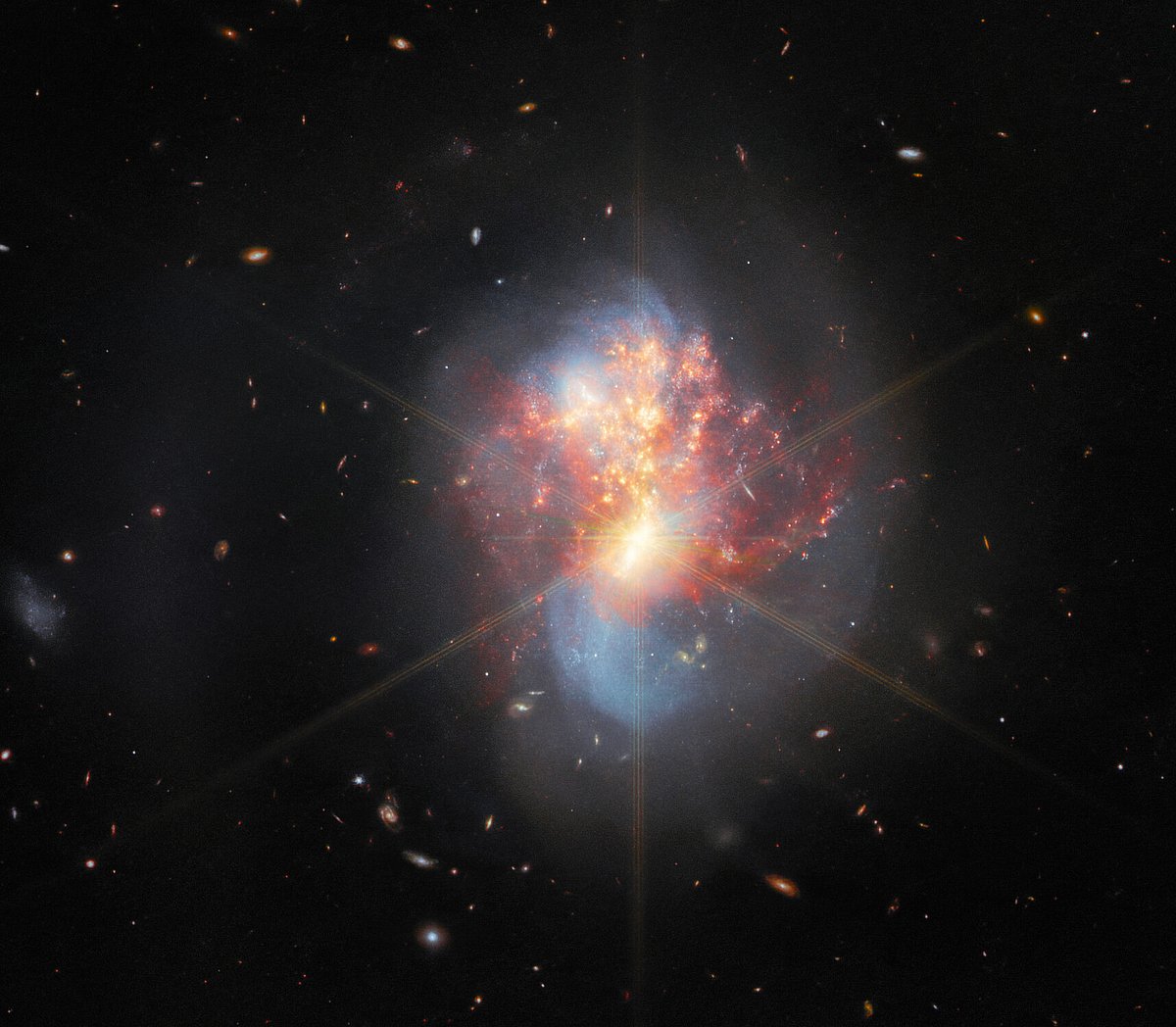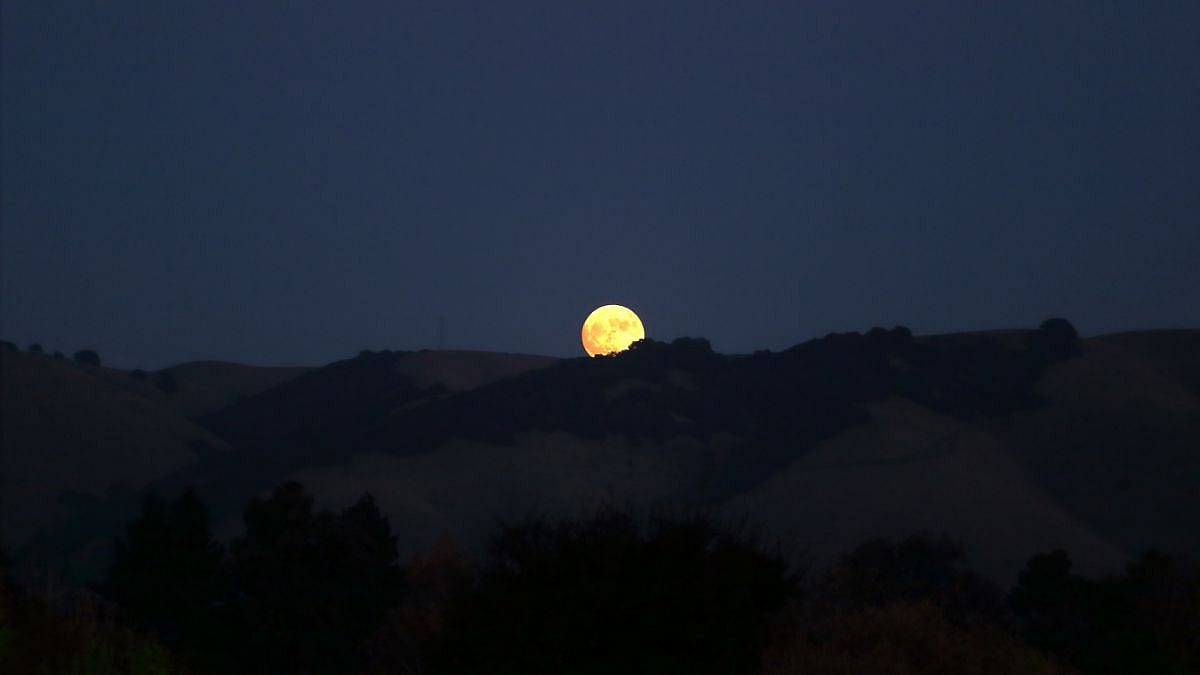The James Webb Telescope has shared yet another spectacular image of the cosmic world—this time of interacting galaxies which are about 270 million light years away from Earth.
The galaxies are named IC 1623, which can be seen plunging headlong into one another, igniting a frenzied spate of star formation known as a starburst, which creates a new star at a rate which is more than twenty times greater than our home galaxy.
These interacting galaxies were captured by MIRI, NIRSpec, and NIRCam, which are Webb's cutting-edge scientific instruments.
@ESA_Webb added in their captions: "Astronomers used Webb's #MIRI, #NIRSpec, and #NIRCam instruments to investigate IC 1623. This will allow scientists to unravel the interactions in galactic ecosystems. These observations are also accompanied by data from other observatories, like @HUBBLE_space #BFFinSpace"
This interacting galaxy's core is extremely luminous and emits eight substantial golden diffraction spikes. The European Space Agency says that the interaction of starlight with the physical structure of the telescope results in the eight-pronged, snowflake-like diffraction spikes.





